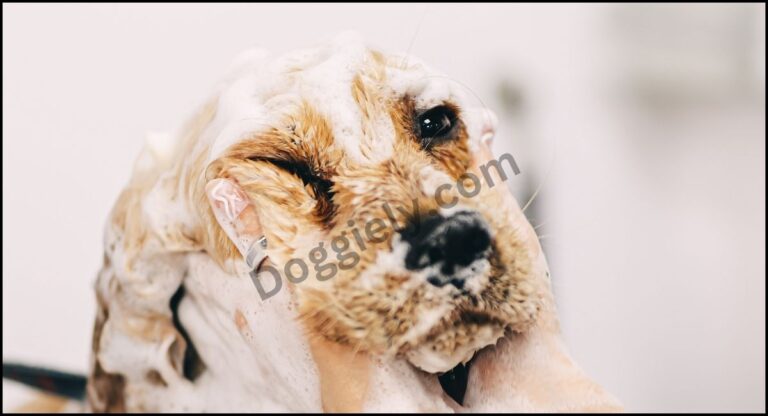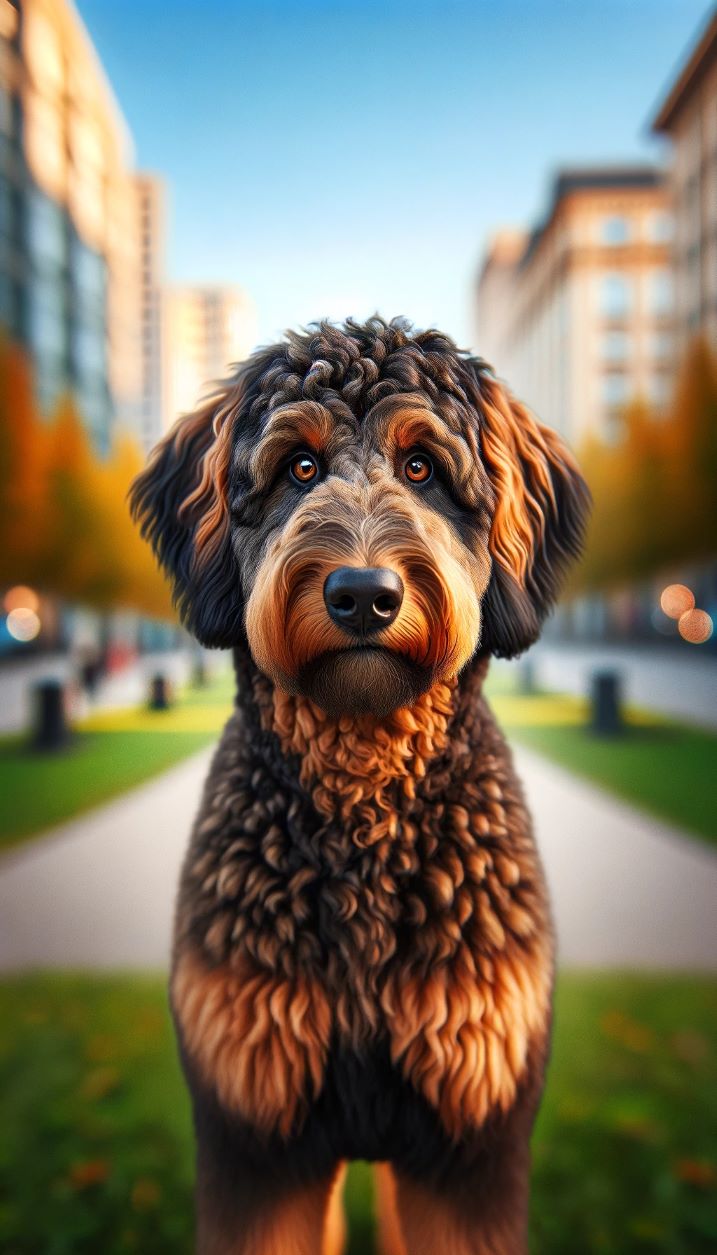Blue Heeler Husky Mix: A Comprehensive Guide

This article aims to explore various aspects of this breed mix, addressing the intents and curiosities of potential owners, breed enthusiasts, and general dog lovers.
The History and Origin of the Blue Heeler Husky Mix Breed
The Blue Heeler Husky mix is a crossbreed that combines two distinct and historically rich breeds: the Australian Cattle Dog, commonly known as the Blue Heeler, and the Siberian Husky. Understanding the history and origin of this mix requires delving into the backgrounds of its parent breeds and the emergence of the hybrid itself.
Origins of the Parent Breeds
- Australian Cattle Dog (Blue Heeler): The husky Blue Heeler was developed in Australia in the early 19th century. Australian settlers needed a robust, enduring dog capable of handling cattle on expansive ranches. They initially bred native Dingoes with imported dogs like the Collie and the Bull Terrier, creating a breed known for its stamina, intelligence, and work ethic. The distinct blue or red speckled coat, a hallmark of the breed, was developed over time, leading to the nickname “Blue Heeler.”
- Siberian Husky: Originating in Northeast Asia, Siberian Huskies were bred by the Chukchi people of Siberia as sled dogs. These dogs were essential for transportation in harsh Arctic conditions, valued for their endurance, strength, and ability to work in teams. In the early 20th century, they gained international attention after they were used to deliver life-saving diphtheria serum across Alaska in the 1925 serum run to Nome, showcasing their incredible endurance and resilience.
Emergence of the Blue Heeler Husky Mix
- Crossbreeding Motives: The Blue Heeler Husky mix is a more recent development, likely emerging in the late 20th or early 21st century as interest in designer dogs or hybrid breeds grew. The mix was probably initially bred for combining the Blue Heeler’s herding instincts and work ethic with the Husky’s strength and endurance.
- Characteristics and Appeal: This hybrid likely gained popularity due to its unique combination of traits: the intelligence and protective nature of the Blue Heeler and the friendly, sociable disposition of the Husky. Additionally, the mix’s distinctive appearance, combining the Heeler’s speckled coat with the Husky’s striking eyes and stature, added to its appeal.
The Development of the Hybrid Breed
- Breeding Practices: Like most crossbreeds, the siberian Husky Blue Heeler mix does not have a standardized breeding practice. Each individual dog can inherit a varied mix of traits from its parent breeds, making the breed somewhat unpredictable in terms of appearance and temperament.
- Recognition and Popularity: While not recognized by major kennel clubs which typically only acknowledge purebred dogs, the Blue Heeler Husky mix has garnered attention among dog lovers who appreciate the unique attributes of mixed breeds. They are often recognized informally among communities of hybrid dog enthusiasts.
- Role and Adaptation: Unlike its parent breeds, which had specific roles in herding and sledding, the Blue Heeler Husky mix does not have a defined role. It is primarily bred for companionship, combining the desirable traits of both breeds. The adaptability of these dogs varies, with some excelling in activities like agility, obedience, and other dog sports, reflecting the working heritage of their ancestors.
Appearance
The full grown Blue Heeler Husky mix often inherits the striking appearance of both parent breeds. They may have the Blue Heeler’s distinctive speckled coat and the Husky’s piercing eyes, often in shades of blue or brown. Their size varies, but they generally weigh between 35 to 60 pounds, standing about 20 to 23 inches tall.
Understanding the Unique Temperament of the Blue Heeler Husky Mix
The Blue Heeler Husky mix is a crossbreed that inherits distinctive traits from its parent breeds – the Australian Cattle Dog (Blue Heeler) and the Siberian Husky. Understanding this breed’s temperament is vital for potential owners to ensure a compatible match with their lifestyle. This detailed exploration covers various aspects of their temperament, influenced by genetic factors and environmental conditioning.
1. Inherited Temperaments from Parent Breeds
- Australian Cattle Dog Traits: The Blue Heeler is known for its high energy, intelligence, loyalty, and protective nature. These dogs are often very work-oriented, thriving on tasks and activities. They can be wary of strangers and exhibit a strong guarding instinct.
- Siberian Husky Traits: Huskies are renowned for their friendly, outgoing, and playful nature. They are typically very social, both with people and other dogs. Huskies are known for their independence and can sometimes be stubborn.
2. Combining Traits in the Blue Heeler Husky Mix
- Energy and Activity Level: One of the most prominent traits in the Blue Heeler Husky mix is their high energy level. This breed requires significant exercise and mental stimulation to stay healthy and happy. They are best suited for active families or individuals who can dedicate time to their physical needs.
- Intelligence and Trainability: This mix is typically very intelligent, inheriting sharp wits from both parent breeds. They are usually trainable but may exhibit stubbornness, requiring consistent and patient training methods.
- Social Behavior and Temperament with Family: Often, the Blue Heeler Husky mix will be affectionate and loyal to its family. They may have the Heeler’s protective nature, making them excellent watchdogs. However, they also tend to inherit the Husky’s love for social interaction, making them friendly and outgoing.
- Interaction with Children and Other Pets: Properly socialized Blue Heeler Husky mixes usually do well with children and other pets. However, due to their herding instinct from the Blue Heeler side, they may try to herd children or smaller animals. Supervision and training are important to manage these instincts.
3. Environmental Influences and Socialization
- Importance of Early Socialization: Early exposure to various people, pets, and environments is crucial in shaping a well-rounded temperament. Positive experiences during the early stages can help mitigate overprotectiveness and ensure they are comfortable in different situations.
- Adaptability: This breed mix can adapt to various living situations but thrives in environments where they have space to move and play. They might not be well-suited for apartment living due to their energy levels.
4. Behavioral Considerations
- Prey Drive: The Husky’s prey drive might be prominent in this mix. Training and secure environments are essential to manage this trait, especially when around smaller animals.
- Independence vs. Attachment: The mix may exhibit the Husky’s independent nature, balanced with the Blue Heeler’s tendency for strong attachment to their owners. This can manifest in a need for companionship but also a degree of self-sufficiency.
5. Meeting Their Emotional and Physical Needs
- Mental Stimulation: Intellectual engagement is as important as physical exercise. Puzzle toys, training sessions, and interactive play can help keep their minds active.
- Routine and Structure: Consistency in routine and expectations can help manage any behavioral issues and provide a sense of security.
Health and Wellness: Caring for a Blue Heeler Husky Mix
The Blue Heeler Husky mix, a unique blend of the Australian Cattle Dog and Siberian Husky, inherits not only the physical and temperamental traits of its parent breeds but also their health profiles. Comprehensive care for these dogs involves understanding their specific health needs, preventative measures, and wellness routines.
1. Understanding Health Risks
- Genetic Predispositions: Like all breeds, the Blue Heeler Husky mix may be prone to certain genetic health issues. From the Blue Heeler side, watch out for hip dysplasia, progressive retinal atrophy, and deafness. Huskies are known for eye issues like cataracts and corneal dystrophy, as well as hip dysplasia.
- Hybrid Vigor: Crossbreeds can sometimes benefit from hybrid vigor, where the mixing of breeds leads to a healthier and more genetically diverse offspring. However, this is not a guarantee, and responsible breeding practices are crucial to minimize health risks.
2. Regular Veterinary Care
- Routine Check-ups: Regular veterinary visits are essential for early detection and management of potential health issues. Annual check-ups, vaccinations, and parasite control are fundamental aspects of preventive care.
- Screenings: Specific screenings recommended for the parent breeds, such as hip evaluations and eye exams, should also be considered for the Blue Heeler Husky mix.
3. Diet and Nutrition
- Balanced Diet: A balanced diet tailored to their age, size, and activity level is crucial. High-quality dog food that meets the nutritional needs of active breeds is recommended.
- Monitoring Weight: Keep an eye on their weight to prevent obesity, which can exacerbate joint issues and other health problems.
4. Exercise and Physical Activity
- Regular Exercise: Given their high energy levels, daily exercise is essential. Activities like walking, running, hiking, or playing fetch can help keep them physically fit and mentally stimulated.
- Mental Stimulation: These intelligent dogs also need mental exercise. Puzzle toys, training sessions, and interactive games can help keep their minds sharp.
5. Grooming and Skin Care
- Coat Care: Regular brushing is necessary to manage shedding, especially during seasonal changes. The Husky’s thick coat and the Heeler’s dense fur can lead to matting if not properly maintained.
- Bathing and Nail Care: Regular baths and nail trims are important. However, avoid over-bathing as it can strip natural oils from their skin.
6. Dental Health
- Oral Care: Regular dental care, including teeth brushing and dental chews, can help prevent periodontal disease, a common issue in many dogs.
7. Environmental Factors
- Climate Adaptation: The mix may inherit the Husky’s tolerance for cold and the Heeler’s adaptability to various temperatures. Ensure they have a comfortable living environment, especially during extreme weather.
- Safe Spaces: Provide a safe and comfortable space at home. A stress-free environment contributes to overall wellness.
8. Emotional Well-being
- Bonding and Attention: These dogs often form strong bonds with their owners and can be prone to separation anxiety. Regular interaction, play, and training can help build a strong, positive relationship.
- Socialization: Early and continued socialization is key to their emotional health, helping them become well-adjusted and confident.
Is This the Right Dog for Your Family?
Deciding if the Blue Heeler Husky mix is the right dog for your family involves understanding the breed’s characteristics and considering how they align with your family’s lifestyle, environment, and expectations. This detailed evaluation will help you determine if this unique and energetic breed mix is a good fit for your household.
Understanding the Breed’s Characteristics
- Energy and Exercise Needs: One of the most prominent traits of the Blue Heeler Husky mix is its high energy level. These dogs require a significant amount of daily exercise, making them ideal for active families who enjoy outdoor activities. If your family leads a more sedentary lifestyle or doesn’t have the time for long walks, runs, or active play, this might not be the breed for you.
- Size and Space Requirements: Typically medium to large in size, these dogs do best in homes where they have enough space to move around. A house with a yard is ideal, though they can adapt to apartment living if their exercise needs are sufficiently met.
- Temperament and Personality: The mix inherits a blend of traits from both parent breeds – the loyalty and protective nature of the Blue Heeler and the friendly, outgoing disposition of the Husky. They tend to be affectionate with family members but may be wary of strangers, making early socialization crucial.
Family Dynamics and Compatibility
- Children in the Household: Generally, the Blue Heeler Husky mix can be a great companion for children, especially when raised together. However, their herding instinct and size may inadvertently lead to rough play, so supervision with younger children is advised.
- Other Pets: If properly socialized, these dogs can coexist peacefully with other pets. However, their strong prey drive (inherited from the Husky) and herding instincts (from the Blue Heeler) might pose challenges with smaller animals.
Training and Behavioral Considerations
- Training Needs: This breed mix is intelligent and capable of learning quickly, but they can also be stubborn. Consistent, positive reinforcement training methods are necessary. Families inexperienced in dog training might find them challenging.
- Behavioral Management: Their intelligence means they can get bored easily, leading to destructive behaviors if not mentally stimulated. Families must be prepared to invest time in training, play, and providing mental challenges.
Grooming and Maintenance
- Coat Care: The breed’s coat can vary but typically requires regular brushing to manage shedding. Families should be prepared for a moderate to high level of grooming needs.
- Healthcare Considerations: Regular vet check-ups and a proactive approach to health care are important. Understanding the potential health issues of both parent breeds can help in early detection and treatment.
Lifestyle and Environment
- Active Lifestyle Alignment: This breed is best suited for families that lead an active lifestyle. If your family enjoys hiking, running, or outdoor adventures, this breed can be a perfect fit.
- Living Environment: Consider if your living environment is suitable for a medium to large, high-energy dog. A cramped space without a yard or nearby parks might not be ideal.
Emotional and Time Commitment
- Attachment and Separation Anxiety: These dogs often form strong bonds and can suffer from separation anxiety. Families with someone usually at home or able to include the dog in daily activities are ideal.
- Time Investment: The commitment to exercise, training, grooming, and companionship is considerable. Prospective owners should realistically assess if they have the time and energy for these demands.
Training Tips for Your Energetic Blue Heeler Husky Mix
Training a Blue Heeler Husky mix can be a rewarding yet challenging experience due to the breed’s high energy levels, intelligence, and sometimes stubborn nature inherited from its parent breeds. Here are detailed tips and techniques to effectively train and manage these dynamic dogs.
Understanding the Breed’s Learning Style
- Intelligence and Energy: Both Blue Heeler and Husky is known for its intelligence and high energy. This means they learn quickly, but also get bored easily. Training should be engaging and varied to hold their attention.
- Independence: Huskies are known for their independent nature, which can sometimes translate into stubbornness during training. It’s important to establish yourself as a patient, consistent, and firm leader.
Basic Training Techniques
- Positive Reinforcement: Like most dogs, Blue Heeler Husky mixes respond well to positive reinforcement. Use treats, praise, and play as rewards for good behavior. Avoid harsh discipline, as it can be counterproductive.
- Consistency is Key: Consistency in commands, rules, and expectations is crucial. Mixed messages can confuse your dog and hinder their learning.
- Short, Frequent Training Sessions: Due to their high energy and intelligence, short but frequent training sessions work best. Long sessions may lead to boredom and a lack of focus.
Socialization
- Early Socialization: Expose your dog to various people, animals, environments, and situations from a young age. This helps in developing a well-rounded, confident, and sociable dog.
- Continued Socialization: Regular interaction with other dogs and people, as well as different environments, is important throughout their life.
Obedience Training
- Basic Commands: Start with basic commands like ‘sit,’ ‘stay,’ ‘come,’ and ‘heel.’ These form the foundation for more advanced training and good behavior.
- Leash Training: Given their energy and potential size, leash training is essential. Start this training as early as possible.
Behavioral Training
- Managing Prey Drive: The Husky’s prey drive can be strong. Teach commands like ‘leave it’ to manage their focus and response in the presence of small animals.
- Curbing Herding Instincts: The Blue Heeler’s herding instinct may manifest as nipping or herding behavior, especially around children. Redirect this behavior using toys and training.
Mental Stimulation
- Puzzle Toys: Use puzzle toys to keep their mind engaged and prevent boredom.
- Learning Tricks: Teach them tricks or tasks. They enjoy challenges and the attention that comes with performing.
Health and Exercise
- Adequate Exercise: Ensure they get plenty of physical exercise. A tired dog is more likely to be attentive and receptive to training.
Overcoming Training Challenges
- Channeling Energy:
- Regular Exercise: Ensure your dog gets plenty of physical exercise. A well-exercised dog is more likely to focus during training sessions.
- Playtime Before Training: Engage in a short play session before training to help burn off excess energy.
- Dealing with Intelligence and Boredom:
- Varied Training Methods: Use different training techniques and routines to keep them engaged. Introduce new tricks and tasks to keep training interesting.
- Mental Stimulation: Incorporate puzzle toys and games that challenge their mind.
- Addressing Stubbornness:
- Positive Reinforcement: Use treats, praise, and play to encourage desired behaviors. Dogs are more likely to respond positively to rewards than to punishment.
- Consistent Rules: Set clear and consistent rules to establish your leadership. Consistency helps prevent confusion and uncertainty.
- Managing Prey Drive:
- Controlled Environments: Train in environments with fewer distractions initially, gradually moving to more challenging settings.
- Focus and Recall Training: Work on focus exercises and recall commands to manage their attention and response in the presence of distractions.
Advanced Training Techniques
- Socialization: Socialize them early and often with various people, animals, and environments to develop a well-adjusted demeanor.
- Professional Training Classes: Consider enrolling in obedience classes or agility training for structured learning environments and socialization opportunities.
- Clicker Training: This method can be particularly effective due to its precise nature, helping the dog understand exactly which behavior is being rewarded.
Understanding and Patience
- Individual Pace: Remember that each dog learns at its own pace. Be patient and celebrate small milestones.
- Bonding Through Training: Use training sessions as an opportunity to bond with your dog. A strong bond can enhance their willingness to learn and obey.
Exercise Routines for Keeping Your Blue Heeler Husky Mix Fit
The Blue Heeler Husky mix, known for its high energy and stamina, requires a robust exercise routine to stay healthy and happy. Here’s a step-by-step guide to creating an effective exercise regimen for your energetic companion.
Step 1: Assess Your Dog’s Current Fitness Level
- Veterinary Check-Up: Before starting any new exercise routine, get a health check-up for your dog to ensure they are fit for increased physical activity.
- Observe Their Current Activity: Note their current activity levels and stamina. This will help you gauge how much exercise they can handle initially.
Step 2: Start with Basic Exercises
- Daily Walks: Begin with daily walks, gradually increasing the duration and pace. Aim for at least 30 minutes to an hour each day.
- Consistent Schedule: Establish a consistent schedule for these walks, as routine helps your dog anticipate and prepare for physical activity.
Step 3: Incorporate Varied Activities
- Jogging and Running: If your dog is responding well to walks, incorporate jogging or running sessions. Start with short distances and gradually increase.
- Hiking: Take your dog on hikes. The varied terrain can be stimulating and provides good physical exercise.
Step 4: Add High-Intensity Activities
- Fetch and Frisbee: Play games like fetch or frisbee in a safe, open space. These activities provide bursts of high-speed running and agility work.
- Tug-of-War: Engage in tug-of-war with a sturdy toy, which provides good muscle exertion.
Step 5: Mental Stimulation
- Training Sessions: Incorporate training sessions into the exercise routine. Teaching new tricks or practicing obedience skills provides mental exercise.
- Puzzle Toys: Use puzzle toys that require physical interaction to solve, combining mental and physical exercise.
Step 6: Socialization and Play
- Dog Parks: Visit dog parks where they can run freely and interact with other dogs. This not only provides exercise but also socialization.
- Playdates: Arrange playdates with other dogs. Playing with peers can be a great way for them to expend energy.
Step 7: Advanced Activities
- Agility Training: Consider agility or obedience sports. These activities are great for physical fitness and mental sharpness.
- Swimming: If your dog enjoys water, swimming can be an excellent low-impact exercise, especially beneficial for joint health.
Step 8: Monitor and Adjust the Routine
- Watch for Signs of Fatigue: Be attentive to signs of overexertion, like excessive panting, slowing down, or reluctance to exercise.
- Adjust Intensity: Depending on your dog’s response, adjust the intensity and duration of exercises. As their stamina improves, you can gradually increase the challenge.
Step 9: Cool Down and Recovery
- Cool Down: After intense exercise, have a cool-down period with a slow walk to normalize their breathing and heart rate.
- Check for Soreness: Regularly check for signs of soreness or injury, particularly in their legs and paws.
Step 10: Regular Veterinary Check-Ups
- Health Monitoring: Regular check-ups are essential to ensure your dog remains fit for the level of exercise they are receiving.
Nutritional Needs of a Blue Heeler Husky Mix
The Blue Heeler Husky mix, known for its high energy and active nature, requires a balanced and nutritious diet to maintain its health and vitality. Here’s a brief guide to understanding and meeting their nutritional needs.
1. Balanced Diet
- High-Quality Dog Food: Choose high-quality commercial dog food appropriate for their age (puppy, adult, senior), size, and activity level. Look for food that lists meat as the first ingredient.
- Protein-Rich Diet: Given their energy levels, a diet rich in protein is beneficial to support muscle health and overall energy needs.
- Moderate Fats: Healthy fats are important for energy, but the amount should be moderated to prevent weight gain.
2. Portion Control and Feeding Schedule
- Portion Size: Follow the recommended portion sizes on dog food packaging or consult with your vet, as overfeeding can lead to obesity.
- Regular Feeding Schedule: Maintain a consistent feeding schedule, typically twice a day for adults and three to four times a day for puppies.
3. Consideration for Life Stages
- Puppies: Puppies require more calories and nutrients to support their growth. Puppy-specific formulas are usually higher in protein and essential nutrients.
- Adults: Adult dogs need a well-balanced diet that maintains their health and supports their active lifestyle.
- Seniors: Senior dogs may require lower-calorie diets to prevent weight gain, especially as their activity levels decrease.
4. Hydration
- Access to Fresh Water: Ensure they have constant access to clean, fresh water, as proper hydration is crucial for overall health.
5. Special Dietary Needs and Supplements
- Consult a Vet: Discuss with your veterinarian if your dog has any special dietary needs or if supplements are necessary, especially for joint health, which can be a concern for active breeds.
6. Avoid Human Food and Toxic Substances
- Be Cautious with Human Food: Some human foods can be harmful to dogs. Avoid foods like chocolate, grapes, onions, and xylitol (a common sweetener).
- Toxic Substances: Be aware of toxic substances that dogs should not ingest, such as certain plants, chemicals, and medications.
7. Monitor Weight and Health
- Regular Weight Checks: Regularly monitor their weight and adjust their diet as needed to prevent obesity.
- Health Check-ups: Regular vet visits can help identify any dietary needs or adjustments required for their health.
Here’s a table describing what to expect when you mix a Blue Heeler with a Husky:
| Characteristic | Description |
|---|---|
| Size | Medium to large size, weight between 35 to 60 pounds, height around 20 to 25 inches at the shoulder. |
| Coat and Color | Variety of coat colors and patterns, possible speckled coat from Blue Heeler, thick double coat from Husky. |
| Eyes | Possibility of striking blue or heterochromatic eyes from Husky, or darker eyes typical of Blue Heelers. |
| Energy Level | High-energy, requiring ample daily exercise. |
| Intelligence and Trainability | Highly intelligent but can be stubborn, posing a challenge in training. |
| Social Behavior | Sociable and friendly, combining Husky’s love for companionship and Blue Heeler’s loyalty. |
| Lifespan | Approximately 12 to 15 years, varying with health, diet, and exercise. |
| Health Risks | Prone to hip dysplasia (both breeds), eye issues more common in Huskies. |
| Behavioral Traits | Strong prey drive from Husky side, natural herding instinct from Blue Heeler. |
| Environmental Adaptability | Adapts well to different environments, tolerates various climates. |
conclusion
The Blue Heeler Husky mix is a fascinating and vibrant hybrid that combines the best traits of the Australian Cattle Dog and the Siberian Husky. Characterized by its medium to large size, this breed often exhibits a stunning coat that can vary in color and texture, potentially inheriting the Blue Heeler’s speckled pattern or the Husky’s thick, fluffy coat. Their eyes are particularly captivating, with the possibility of the striking blue or heterochromatic hues common in Huskies.
In terms of temperament, these dogs are known for their high energy levels and require regular, vigorous exercise to stay happy and healthy. They are highly intelligent, which makes them trainable, but their independent streak might call for a bit more patience and consistency in training. The mix is generally sociable and affectionate with family, inheriting the Husky’s friendly nature and the Blue Heeler’s loyalty, though they can be wary of strangers.
Health-wise, the Blue Heeler Husky mix is generally robust, but like all breeds, they can be prone to certain genetic health issues, such as hip dysplasia. Their lifespan typically ranges from 12 to 15 years, and with proper care, nutrition, and regular veterinary check-ups, they can be a long-term, loving companion.





